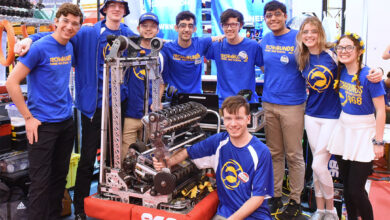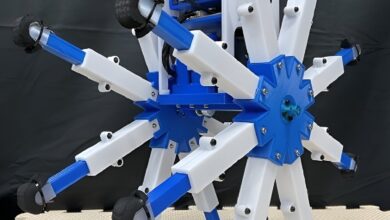Advancing Thoracic Surgery With Robotics and Video-Assisted Strategies

Richard Lazzaro, MD
Chief, Thoracic Surgery, RWJBarnabas Health, Southern Region
Toms River, NJ

Developments in robotic-assisted surgery such as Ion robotic-
assisted bronchoscopy may be game changers in the surgical management of lung cancer, according to Richard Lazzaro, MD.
In an interview with ONCOLOGY, Lazzaro talked about how minimally invasive tools such as Intuitive’s Ion have made thoracic surgery more effective by reducing complications and time to intervention for patients. He also highlighted other potential applications of robotic video-assisted surgical tools coming down the road, which may reduce the variability in surgery and close the skill gaps among surgeons with different degrees of medical experience.
Lazzaro also focused on the importance of multidisciplinary collaboration in the context of selecting appropriate treatment strategies for this patient population. According to Lazzaro, teamwork among radiation oncologists, medical oncologists, pathologists, and other physicians on the multidisciplinary thoracic tumor board can help determine the best type of adjuvant therapy for patients.
Q / Monmouth Medical Center recently highlighted your use of the robotic-assisted platform Ion.1 How has this tool impacted your practice?
Lazzaro / Lung cancer affects so many patients; there are more than 230,000 new diagnoses in the United States each year. In addition to patients with lung cancer, about 1.6 million [individuals] each year are found to have a nodule in the lung. When you look at those nodules, you want to determine whether they are suspicious or whether they can be followed. A large number of nodules are suspicious. You can do probability testing by looking at the size of the nodule to see if it’s grown from previous scans, and if there has been any activity on PET scans, which assess the function of a nodule. Is it inert, or is it biologically active? Is it in a patient with chronic obstructive pulmonary disease? Is the patient older? Is the nodule in the upper lobe? Does the nodule have irregular borders called spicules? Did it grow in each direction with the same symmetric radial growth?
[The Ion platform can] utilize those tools to look at a nodule and determine whether it should not be observed and requires a biopsy. It gives you the ability to diagnose and add an additional tool called endobronchial ultrasound to stage [lung cancer]. In lung cancer, time to intervention is critical, and this robotic platform gives us a minimally invasive solution to lung biopsy. [Ion] overcomes some gaps [such as] traditional ways to utilize a bronchoscope, requiring the lesion to be in the central part of the chest. If it was a nodule in the periphery or the surface of the lung, where more than 70% of cancerous nodules are located, then the bronchoscopy couldn’t biopsy that. We would require a CT scan–guided biopsy, which has a higher incidence of pneumothorax and bleeding.
This robotic platform gives us the ability to not only reach but [also] biopsy these nodules that are in the periphery of the lung and all the segments of the lung. It is a game changer for patients. In 2024, if you have a suspicious nodule, you should have some tissue on that [biopsied]. Now, for early lung cancer, there are times when we might forgo a biopsy. For the majority of patients, we want to have a biopsy before we make the treatment decision. Utilizing this technology and knowing the advances in systemic therapy and studies in immunotherapy, many patients nowadays are receiving treatment before surgery. The ability to acquire tissue and do staging with fewer complications and up to a 95% chance of getting to that area and getting a diagnosis of cancer safely for patients gives us an opportunity to diagnose and treat patients earlier, which has always been shown to be beneficial in lung cancer. In essence, it’s [a] quicker and less invasive [way to] get your diagnosis, your staging, and your treatment plan.
Q / What do current data or evidence show about the efficacy of Ion in this patient population?
Lazzaro / Data are operator dependent. How motivated are you, what tools do you utilize, and what lesions are you going after? If you go to biopsy something that’s 3 cm, you’re going to be up to 100% when getting a diagnosis on it. Sometimes, you may find smaller lesions that are under
10 mm that are more peripheral and challenging to get to. Additionally, does the operator confirm [the size by using] this robotic bronchoscopy platform and getting to the lesion?
I’m happy that we’re over 95% successful in localizing the lesions. We utilize different tools, including fluoroscopy and body vision, which is utilizing the fluoroscopy machine while doing a simulated spin to develop a CT scan image to confirm that your biopsy instrument is in the lesion. The final tools that we use [are] something called radial EBUS [endobronchial ultrasound]. When you navigate to the lesion, you put a needle into it through a biopsy, and you take some of that fine-needle aspirate. As you’re preparing it on slides for your pathologist, who’s in the room with you, we’re putting that radial EBUS probe in and we’re looking for a signal that demonstrates that our tool is in the lesion. In addition to the bronchial ultrasound, fluoroscopy, and body vision, we take the material at the time of acquisition and have our pathologists look at the lesion material to make a diagnosis. We make sure we have enough to do all the molecular testing with next-generation sequencing for oncologists to make a treatment decision regarding systemic therapy.
Q / Are there any patients with lung cancer who may particularly benefit from treatment with Ion? Are there any patients for whom this approach would not be recommended?
Lazzaro / The patients who will get the biggest benefit are the ones for whom we’re looking to give induction therapy. Being able to acquire a biopsy with Ion technology and having the pathologist there allows us…to confirm the disease stage and get all the pathology material in a very short period to make that treatment decision. For patients who are receiving induction therapy, it is our role to get tissue staging and molecular pathology.
The patients who would not benefit from undergoing bronchoscopy, in general, are the ones who have emphysema or contraindications. Emphysema is severe enough that they have low oxygen at baseline, so putting them under a general anesthetic would not be wise. It’s the same thing if they have instability of their vital signs; maybe they have cardiac disease or a recent myocardial infarction or heart attack. Finally, if someone has a propensity toward bleeding or a bleeding disorder that needs to be addressed before the procedure is performed [they should not receive this treatment].
Q / Are there any other developments in robotic-assisted minimally invasive video-assisted thoracoscopic surgery that might hold promise in the field?
Lazzaro / Robotic surgery is a form of video-assisted thoracic surgery. We know that smaller incisions that preserve the concepts and the critical tenets of oncologic surgery never need to be changed. Doing maximal oncologic surgery in a minimally invasive way is the goal. With our system, we do more than 95% of our procedures as minimally invasive, usually with the Ion robot.
Future technology in the robot will include an augmented reality platform. We may have the ability to take a [patient’s] imaging beforehand and have their CT scan with a 3-dimensional reconstruction alongside our operative field. The future of surgery will be much like when you drive your car and have GPS navigation and a highlighted map. The ability to recognize structures in the operating room and utilize the fusion of advanced imaging with the visual field will be an important consideration in the future. It is something that many companies are working on, and it will be a game changer.
Recently, Intuitive came out with its 5th-generation robot, [da Vinci 5].2 You can see with 10 times the magnification and operate with 3 times the precision. You have more ability to move the instrument internally, and they described that with degrees of freedom. It’s like having your hand inside the chest, and you can dissect the round structures. There’s a whole field where you’re operating, and you can appreciate the tension and countertension that you apply to tissue to be able to perform surgery. The ability to manipulate a robotic instrument and be able to feel the tissue while you’re controlling a $2 million robot is another game changer.
I believe that, in the future, the ability to record those movements of a surgeon’s hands while an operation is being performed and the ability to observe a video recording of that operation will be used for training new physicians. They could watch a master surgeon perform an operation and have their hands strapped in. Not only would they see the operation, but their hands would be strapped into a machine that’s taking their hands through the same movements that the master surgeon did. You would learn muscle memory and learn how to do those moves.
It’s an exciting time because anything that you can do to leverage technology to minimize the variability in surgery eliminates the skill gap so that novice surgeons may become as technically gifted as the intermediate surgeon or the master surgeon. That’s the goal of medicine: How can we get 99% of the people performing at the top 1%?That’s by utilizing such technology to get a world of hyperperformers.
Q / How does multidisciplinary care factor into your treatment of patients with lung cancer at your clinic?
Lazzaro / Advances in lung cancer management have been tremendous. More patients can be treated [and experience] improvements in long-term survival. A lot of that comes from having a multidisciplinary thoracic tumor board that includes medical oncologists, radiation oncologists, pathologists, radiologists, pulmonary physicians, and thoracic surgeon oncologists. When you can review a [patient’s] history, images, and pathology and relate them to clinical and pathologic staging, you can take that [patient’s] current extent of disease and confirm the collective decision of the group in how you will treat these patients. Then you get to follow up and represent those patients for their response to treatment and then determine their next course of care. Sometimes it’s surgery first, with no adjuvant therapy and just surveillance. Sometimes a patient has very early cancer and they’re not a great surgical candidate because of an unhealthy heart, lungs, kidneys, or liver, making them a candidate for stereotactic body radiation therapy, stereotactic ablative radiotherapy, or CyberKnife.
A lot of patients are going to become candidates [for surgery] because they may [have] stage II or III disease, and they’re going to become candidates for induction therapies. Our oncologists would do chemotherapy and immunotherapy before getting repeat imaging and discussing it again. It takes a little more work to get the team together, but we’re not looking at it as work; we’re looking at it as planning to develop the best treatment approach for patients. You want to take care of patients like that patient was your family member, but you are objective. That’s the beauty of a multidisciplinary approach: It factors into all our patients. Maybe not every patient needs to be presented at a formal multidisciplinary tumor board, but every patient is discussed among thoracic oncologists, medical oncologists, and radiation oncologists. There is a shared decision-making that is disseminated and spoken with the patient so that they understand they have not one person but a team of physicians taking care of them.
Q / What do you hope your colleagues take away from this discussion?
Lazzaro / The management of lung cancer is different than it was even 5 years ago. If we can detect lung cancer early, we have options for treating patients today that we never had before. These options may significantly improve [chances for]a cure.
Speak with your patients, get them CT scans, and get them evaluated by some type of nodule clinic or a thoracic oncology clinic that includes pulmonary or medical oncology, radiation oncology, thoracic surgery, or all of the above. If we find things early, patients are easier to treat. If we find things more advanced, let’s get that Ion bronchoscopy in. Let’s do the mediastinal staging. Let’s get the molecular pathology. Let’s get them a multidisciplinary approach, some induction therapy, and a reassessment. This is the time when we really need to make a huge difference in lung cancer.
References
- Latest most advanced treatments for lung cancer now available at Monmouth Medical Center. News release. RWJBarnabas Health. January 22, 2024. Accessed
May 7, 2024. https://tinyurl.com/ty8st3hm - Intuitive announces FDA clearance of fifth-generation robotic system, da Vinci 5. News release. Intuitive. March 14, 2024. Accessed May 7, 2024. https://tinyurl.com/3x67t2yx



